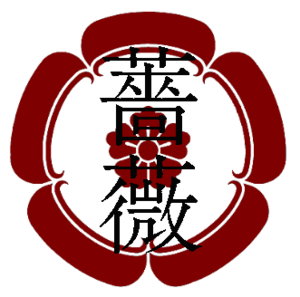Kimito
Kimito (公遠様), is a principal deity of Taido and a member of the Sanmiittai (三位一体, lit. 'trinity'). He often represents preservation, and is a symbol for lack of change and the positive of order but negative of stagnation. In the tradition of Taido called Mikoism, the Goddess, or Anemi, is described as supreme, yet Kimito is still revered alongside Hishanto and Senyo. In the Shantoist sect he is merged with, and represents an aspect of, Hishanto. In traditional Taido he is one of the four equivalent deities who make up the 'major' caste of tama In traditional Taido he is one of the four equivalent deities who make up the 'major' caste of tama.
Kimito is described as being formless, as he is an echo of the primal Kon's (魂, lit. 'soul, self') first thoughts. As such he is often depicted either as a rose, the unji for rose (薔薇) or a combination of the two.
In the creation story Kimito is described as being the first of the Sanmiittai to exist, though unlike the other two he did not will himself into existence and is intertwined with the primal Kon rather than merely feeding from it. His role is to preserve what Anemi creates from the meddling of Senyo.
